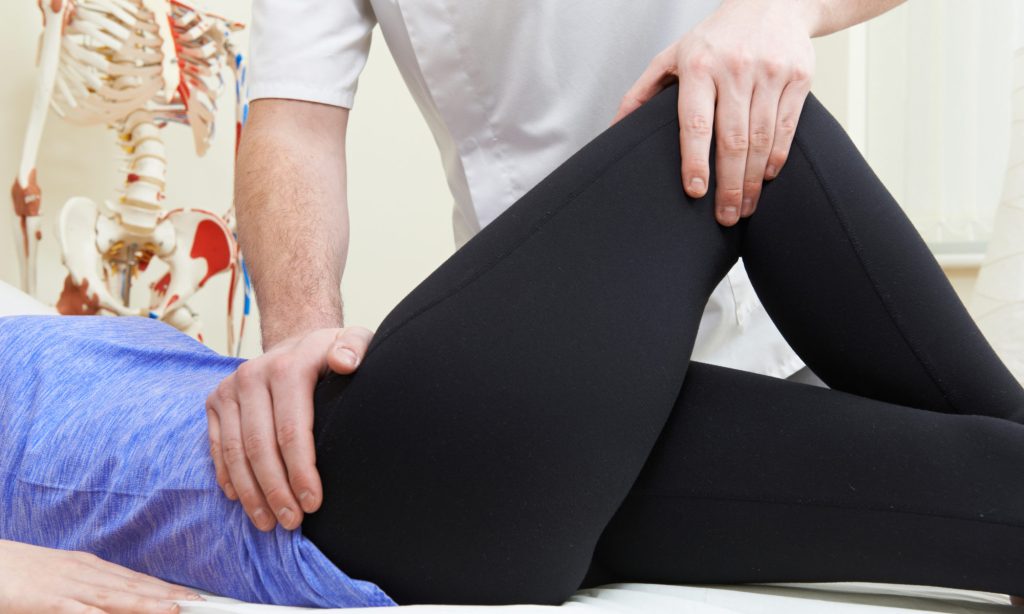If you were like many of us who was stuck at home during the pandemic you likely started to experience some sort of joint pain-probably from either lack of movement, or sitting in a makeshift office at the dinner table.
One of the more common joint pains we are witnessing today in our physiotherapy clinic is a rise in chronic knee pain caused by the hip!
Think sitting for all day at a desk hunched over with added pressure to your hip leading to hip weaknesses, muscle imbalances and poor neuromuscular control.
Simply put the Knee Joint is made up of the femur (thigh bone) and the tibia and fibula (the lower limb bones). Also important is the patella – the knee cap in the front of the knee joint, known as floating bone in the middle of quadriceps ligament. Unlike the hip and ankle which can move in many ways and can compensate for muscle imbalances and weaknesses of the lower limb, the knee is a hinged joint which can move predominantly only through flexion and extension. There are only a few degrees of rotation available at the knee joint, which means that there is not much space for compensation. Muscle weakness and imbalances in the hip can increases forces directly on the knees, which can lead to non-optimal loading of the knee ligaments, cartilage, meniscus and which can potentially lead to a symptomatic knee.
At our physio clinic you can rely on an expert physiotherapist to assess your condition including mobility, weakness, and imbalances of your hip muscles, which often gets missed, to find the source of your knee pain.
Here are 5 Easy exercises you can do at home to increase hip mobility and relieve some pain:
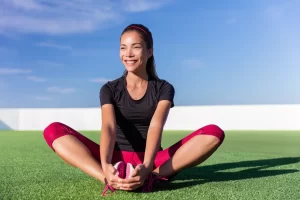
Sit in a comfortable position on you sitting bones and bring your feet together as seen in the photo. Allow your knees to lower toward the ground as far as you feel comfortable. Try to open your knees even more until you feel a slight stretch in your inner tights. Try to hold for 10 second and then bring your knees a bit closer together. Repeat 10 times at your comfortable pace.
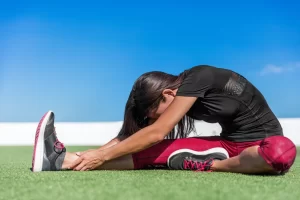
keep one knee bent and leg open from the hip joint and lengthen other leg in front of you and slightly on the side. Lean forward and try to reach with your hands as far as possible while keeping head and neck in alignment of C-shape with entire spine. You will feel slight stretch on the back side of your tight and maybe as well along your spine. To increase the stretch, bring your foot and toes toward you. Hold for 10 second and repeat on other side. Alternate between legs for up to 10 times.
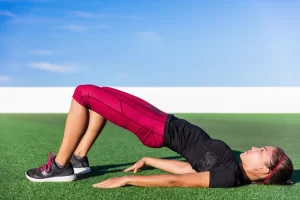
lay on your back with feet hip width apart and at a comfortable distance from your pelvis. Keep your arms alongside your body and lift your pelvis as high as it feels comfortable for you. Repeat for 10 times.
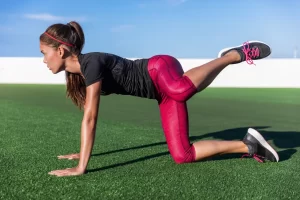
Position your body in 4 point kneeling position with knees below hips and hand below shoulders. Keep your spine in neutral position with head and neck aligned with the rest of your spine. With bend knee lift one leg on the side as far as you can without twisting your spine. Alternate between legs and repeat 10 times with each leg.
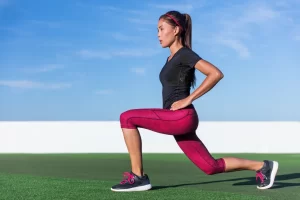
Position your body in 4 point kneeling position with knees below hips and hand below shoulders. Keep your spine in neutral position with head and neck aligned with the rest of your spine. With bend knee lift one leg on the side as far as you can without twisting your spine. Alternate between legs and repeat 10 times with each leg.
These contents of this article do not constitute medical advice, diagnoses, or treatment and is provided for educational purposes only. It is not meant to be a complete or exhaustive advice to any specific individual’s medical condition. Always consult with a qualified and licensed Physiotherapist or Medical Professional for individual advice.
